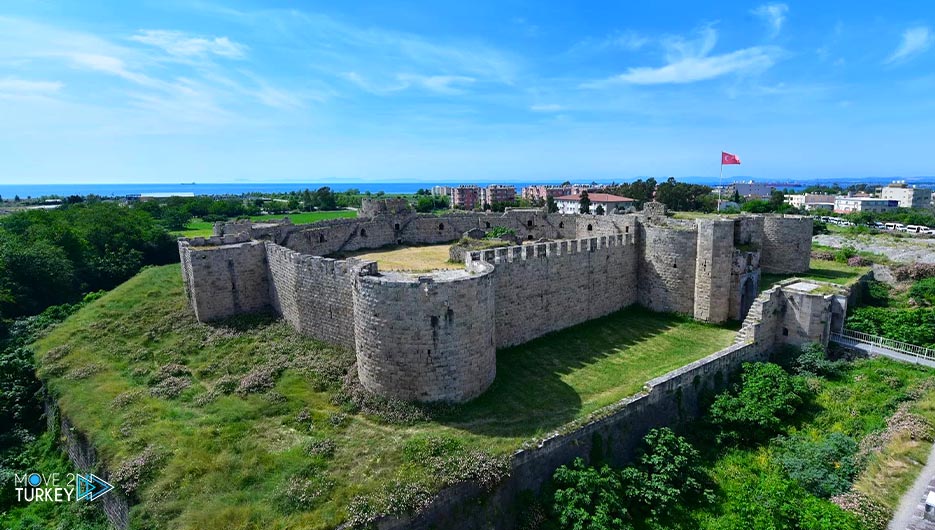
The historic “Payas” castle in the Turkish state of Hatay (south), which was built by the Genoese in 1577, is preparing to welcome its visitors, who are lovers of history and antiquities, soon.
The castle was built by the Genoese in the Middle Ages before being restored by the Ottoman Sultan Selim II (1524 – 1574) for defensive purposes.
-Advertisement-
Payas Castle, which has deep moats surrounding it, witnessed its first archaeological excavations in 2018.
Where it was revealed an important group of archaeological findings that document the history of the castle.
During the implementation of excavations and excavations, the team of archaeologists was able to reach the foundations of the small mosque in the citadel.
In addition to access to the military barracks in the courtyard area, both buildings were reconstructed in proportion to their old site.
And last October, a team of 21 archaeological experts was able to reach the foundations of the prison, guardhouses, and warehouses.
Which was located in the courtyard of the castle in the framework of the second stage of excavation and excavation.
-Advertisement-
The administration of the Hatay Archaeological Museum intends to open the castle to receive visitors after completing the restoration of the surrounding trenches, in order to support the tourism movement in the region and show its historical richness.
Aisha Ersoy, director of the Hatay Archaeological Museum, said that the castle, in which excavations and excavations continue, is one of the most prominent and important castles that reflect the architectural arts during the medieval period.
Ersoy stated that the fortress was used as a site, a military headquarters, a prison, and an outpost (a gap) to protect trade convoys over the centuries.
She added: The castle is considered one of the distinctive castles in Turkey because it is surrounded by homogeneous and deep moats.
-Advertisement-
In 2018, the first excavations and excavations began in order to reach the largest number of antiquities.
And she continued, “Excavations and excavations were carried out in Payas Castle by a team of Turkish archaeologists consisting of 21 experts.
During the excavations and excavations, the team was able to reach the foundations of a building inside the castle that was historically known as the Little Mosque.
The team also reached the foundations of the fortress barracks that existed hundreds of years ago within the courtyard and the foundations of a number of houses mentioned in the book “Seyahtanmeh” (The Journeys) of the Turkish traveler Evliya Çelebi (1611-1684).
-Advertisement-
Ersoy explained that during the current year, and before starting to restore the trenches surrounding the castle, the team opened two slits that allow them to see the layers of the castle and conduct geological and archaeological studies on it.
Ersoy noted that the castle will soon begin receiving visitors after the end of the latest excavation and excavation work.
Noting that the administration of the Hatay Archeology Museum intends to convert the reconstructed barracks in the courtyard area into a museum to display the antiquities that were extracted from the castle.
And she added: The building of the barracks inside the castle will be converted into a museum, and all the cannons and their shells, frescoes, and Ottoman pots that were extracted from the castle during excavations and excavations will be displayed here.
-Advertisement-
Ersoy said that visitors will be able to perform prayers in the small mosque, which is also known as the Citadel Mosque, during their visit to the place and enjoy a historical journey through time in the precincts of the Citadel.
The director of the museum concluded her speech by pointing out the importance of the castle, as it is a distinctive landmark of the state of Hatay, and that its opening will contribute to the development of the tourism sector in the region.






















